Stone-built villages on mountain slopes, cave-lined beaches with no signs, and monasteries hidden in dense forests, hidden places in Greece are scattered across the country, far from tourist trails. They carry centuries of history in their walls, myths in their silence, and the kind of calm that can’t be staged. These are the places where the air smells of herbs, paths are marked by shepherds’ footsteps, and time feels slower. For travellers drawn to real stories and forgotten beauty, this is the side of Greece that speaks softly but leaves a lasting mark.
Discover 10 Hidden Places In Greece
Step away from the familiar paths and uncover hidden places in Greece where history, silence, and raw landscapes still shape daily life.
1. Kastania Cave, Peloponnese
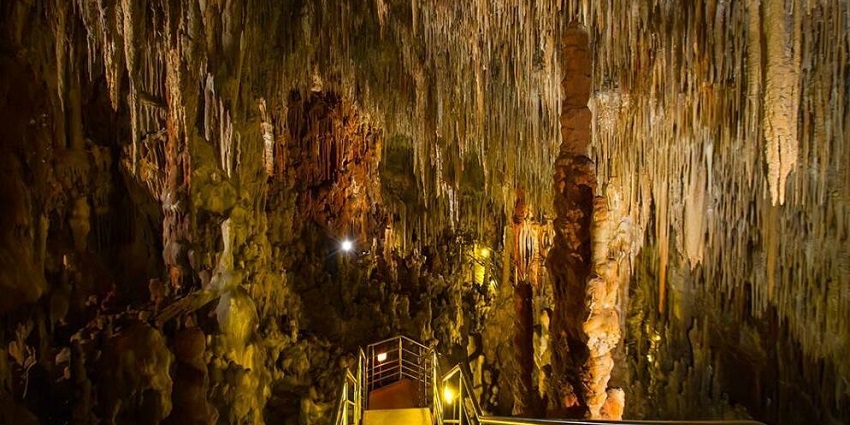
Photo: Batikiotis / Wikimedia Commons
Hidden beneath the limestone hills of southern Peloponnese, Kastania Cave is one of the most remarkable geological treasures in Europe, yet it remains largely unknown to travellers. This natural wonder was formed over three million years ago, but it wasn’t until a local shepherd stumbled upon it in the 20th century that its chambers came to light. The cave is divided into two levels, both packed with thick mineral formations. Stalactites hang low above your head, while stalagmites rise in uneven rows from the ground. The colours are distinct from iron-rich reds, dark ochres, and patches of pale stone where water continues to trickle.
Cost: €7 per person for adults
Timings: 10 AM – 4 PM (closed Tuesdays)
Nearby Attractions: Diros Caves, Limeni village, Gythio port
2. Voidokilia Beach, Messinia
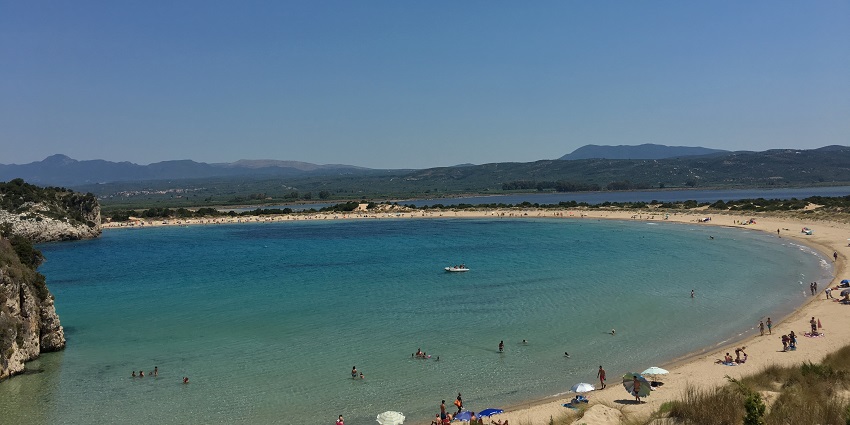
Photo: Georgios Michalagas / Wikimedia Commons
Voidokilia Beach curves into an almost perfect omega shape, backed by dunes and the still waters of the Gialova Lagoon. It is part of the Natura 2000 protected area and officially recognised as a “Place of Particular Natural Beauty”. On one side, the Ionian Sea rolls in gently with clear, shallow waters. On the other, the lagoon forms an important habitat for migratory birds. A climb up the hill leads to Nestor’s Cave, used by humans since Neolithic times. Above that, the ruins of Old Navarino Castle overlook the gulf.
Timings: 24*7
Nearby Attractions: Nestor’s Cave, Palaiokastro ruins, Gialova Lagoon
3. Anafi Island, Cyclades
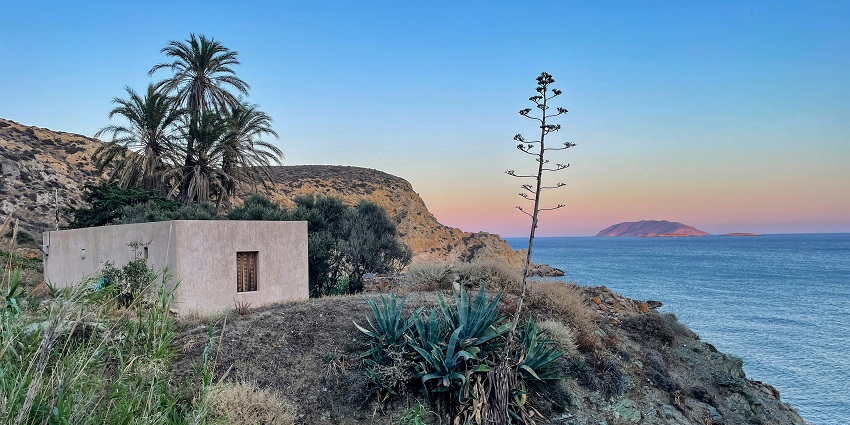
Photo: Jordan Carns / Unsplash
Tucked southeast of Santorini, Anafi Island floats quietly in the Aegean, left off ferry brochures and cruise itineraries. Its coastline is rugged, dotted with rocky bays and beaches with no roads or shops nearby. The island has no airport, and boats arrive only a few times a week, adding to its stillness. In Chora, the only village, houses are built close together in whitewashed clusters, and locals still gather in the main square for evening conversation. The walk to Kalamos, the towering monolith at the island’s eastern edge, takes you along exposed ridgelines with wide sea views and silence.
Cost: Ferry ticket from €15
Nearby Attractions: Kalamos Rock, Zoodochos Pigi Monastery, Roukounas beach
4. Zarakes Village, Euboea
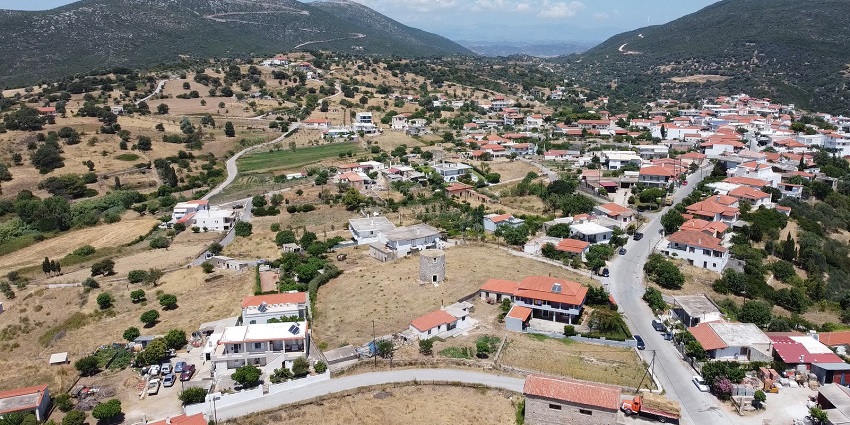
Photo: Glinard / Wikimedia Commons
Zarakes lies in southern Euboea, surrounded by hills that shift in colour with the seasons. The village is made up of stone houses, many with wooden balconies and narrow alleys that bend without pattern. Locals still follow daily routines of fields tended early in the day, bread baked in outdoor ovens, and quiet chats in the square after dusk. A short walk away, the ruins of an old fortress stand partly hidden by shrubs and wind-shaped trees. Among the lesser-known hidden places in Greece, Zarakes offers something simple, real village life that hasn’t changed to fit outside expectations.
Timings: 24*7
Nearby Attractions: Zarakes Castle ruins, Kymi town, Petries beach
5. Old Perithia, Corfu
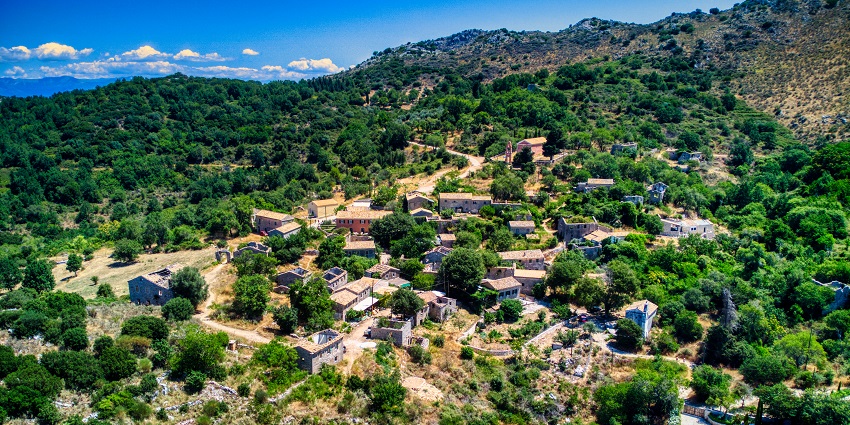
Photo: Hagai Agmon-Snir حچاي اچمون-سنير חגי אגמון-שניר / Wikimedia Commons
Old Perithia sits high on the slopes of Mount Pantokrator, far above Corfu’s busy coastline. Once a thriving settlement in the Venetian era, the village was built inland to escape pirate raids. Today, many of its 130 original stone houses still stand, some restored, others left roofless and open to sky and ivy. The architecture is Venetian, with arches, thick walls, and small courtyards overgrown with vines. A few local tavernas still operate seasonally, serving food grown nearby. Hikers often pass through on their way to the summit, but most miss the village itself.
Timings: Sunrise – Sunset
Nearby Attractions: Mount Pantokrator, Kalami Bay, Corfu Trail
6. Pyrgi Village, Chios
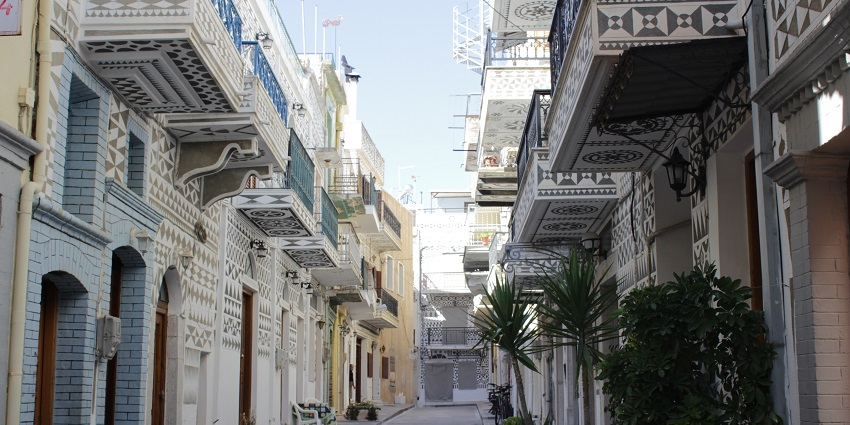
Photo: Eva-tzi / Wikimedia Commons
On the southern coast of Chios lies Pyrgi, a unique and interesting village in Greece. Its buildings are covered with striking black-and-white geometric patterns known as xysta, carved into the plaster by hand using a centuries-old technique. The village layout follows a medieval structure, with narrow alleys designed for defence. Many homes have small upper-floor balconies that nearly touch, creating shaded walkways below. The village has been continuously inhabited since the Genoese era, and several mansions still bear the crests of their original families. Small squares are lined with quiet cafés where residents play tavli or exchange news in the local dialect.
Timings: 24*7
Nearby Attractions: Mesta village, Olympi caves, Emporios beach
7. Agios Dionysios Monastery, Mount Olympus

Photo: Juergen-Olymp / Wikimedia Commons
Agios Dionysios Monastery stands on the slopes of Mount Olympus at an altitude of 850 metres, hidden among thick forests near the town of Litochoro. Founded in 1542 by Saint Dionysios, a monk from Thessaly, it was built in a ravine to remain secluded. The original complex also served as a refuge for Macedonian fighters during Ottoman rule. Over the centuries, it suffered multiple attacks and fires before being destroyed by German forces in 1943. Some structures from the 18th century, including the main church and part of the tower, still remain.
Timings: 9 AM – 5 PM
Nearby Attractions: Enipeas Gorge, Litochoro village, Mount Olympus National Park
8. Lichadonisia Islands, Central Greece
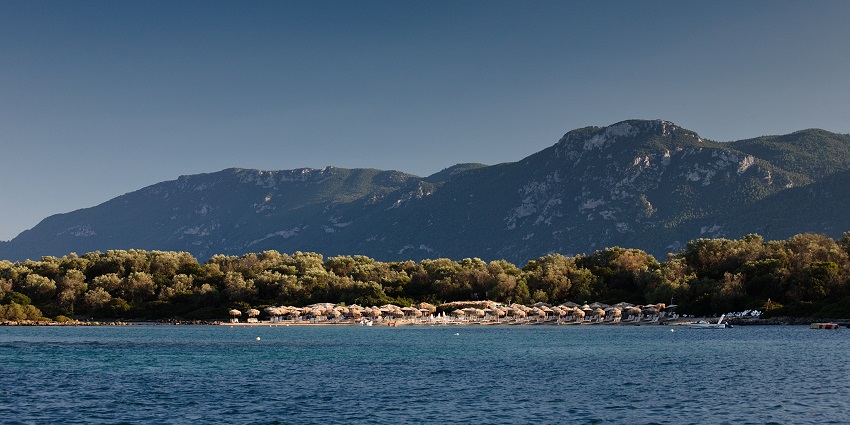
Photo: Deyan Vasilev ( Dido3 ) / Wikimedia Commons
Off the coast of Central Greece, the Lichadonisia Islands form a quiet volcanic chain of small uninhabited islets shaped by ancient eruptions. Locals call them the “Greek Seychelles” for their turquoise shallows and soft, white sand. Access is only possible by boat from Kamena Vourla, and there are no roads, hotels, or signs. The main island, Manolia, holds the remains of a small settlement, now silent and partly overgrown. During summer, small boats bring day visitors who snorkel among sea life and explore the shallow shipwreck nearby.
Cost: Boat tours from €15
Timings: May – October, 9 AM – 6 PM
Nearby Attractions: Kamena Vourla thermal springs, Monastery of Metamorphosis
9. Kastro Village, Sifnos
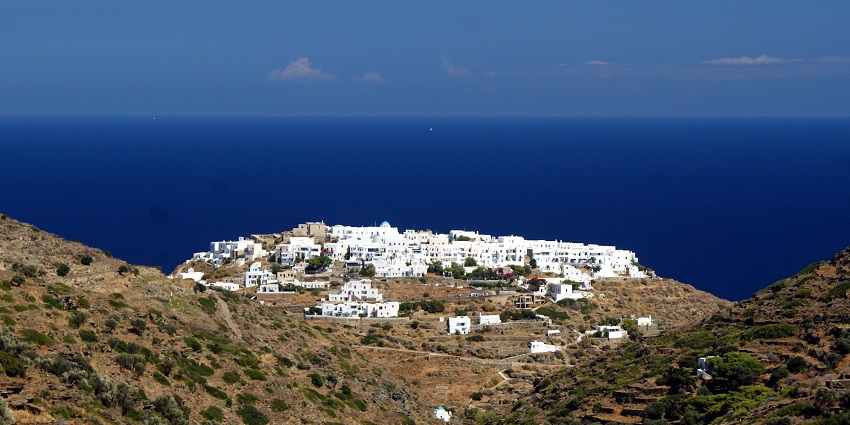
Photo: Kondephy / Wikimedia Commons
Kastro is the oldest continuously inhabited settlement in Sifnos, with roots reaching back to the 3rd millennium BC. Built on a steep hill 80 metres above sea level, the village overlooks the Aegean and keeps its fortified medieval layout intact. The village features six arched gateways, or logia, and several chapels from the 16th and 17th centuries with decorated interiors. Its elliptical structure follows the natural shape of the hill, designed with defence in mind. Among all hidden places in Greece, Kastro stands as a living open-air museum with centuries of history you can walk through.
Timings: 24*7
Nearby Attractions: Church of Seven Martyrs, Seralia Bay, Sifnos pottery workshops
10. Alonissos Underwater Museum
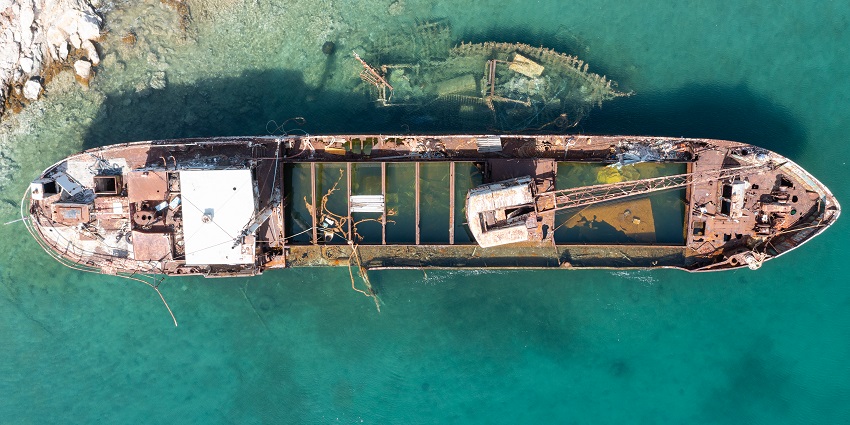
Photo: dronepicr / Wikimedia Commons / Image For Representation Only
Located off the coast of Peristera Island near Alonissos, this site is often called the “Parthenon of Shipwrecks”. It is Greece’s first underwater museum, where divers can explore the remains of a large merchant ship that sank around 425 BC. The wreck was discovered in the 1980s and holds hundreds of intact amphorae, which were once used to transport wine. It is surrounded by the clear waters of the National Marine Park of Alonissos and is home to monk seals, groupers, and sea turtles. The museum is open to both certified divers and snorkellers through licensed local tours.
Cost: Guided snorkelling tour from €45
Timings: June to September, 10 AM – 4 PM
Nearby Attractions: National Marine Park of Alonissos, Patitiri port, Leftos Gialos beach
There is more to Greece than ancient theatres and postcard beaches. In quiet villages, forested slopes, and untouched islands, a different side of the country still lives. These hidden places in Greece are not part of a standard itinerary. For travellers who want to see Greece beyond the obvious, TripXL can help map out the journey one place at a time.
Cover Photo: Constantinos Kollias / Unsplash


 WhatsApp
WhatsApp
 Twitter
Twitter









